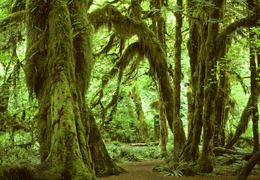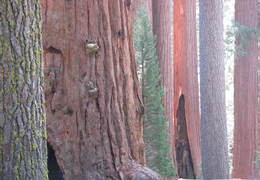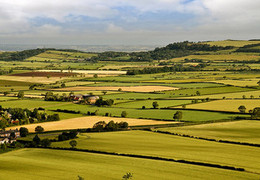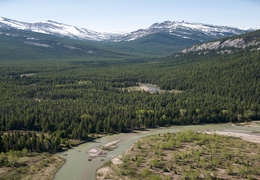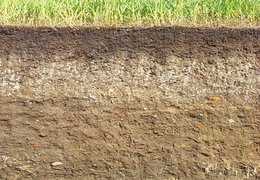Biomass Carbon Stock
- /ecoregions/
Now Showing: 2006
Summary
Biomass carbon includes carbon stored in above- and below-ground live plant components (such as leaf, branch, stem and root) as well as in standing and down dead woody debris, and fine litter. For the western United States, total live and dead biomass carbon during the baseline period (2001–2005) was estimated to be between 5048-5927 Tg C and 1867-4178 Tg C, respectively, and is predicted to increase to 5806-7373 Tg C and 2192-4462 Tg C, respectively, in 2050.
Suggested Citation
Zhu, Zhiliang, ed., Bergamaschi, Brian, Bernknopf, Richard, Clow, David, Dye, Dennis, Faulkner, Stephen, Forney, William, Gleason, Robert, Hawbaker, Todd, Liu, Jinxun, Liu, Shuguang, Prisley, Stephen, Reed, Bradley, Reeves, Matthew, Rollins, Matthew, Sleeter, Benjamin, Sohl, Terry, Stackpoole, Sarah, Stehman, Stephen, Striegl, Robert, Wein, Anne, and Zhu, Zhiliang, 2010, A method for assessing carbon stocks, carbon sequestration, and greenhouse-gas fluxes in ecosystems of the United States under present conditions and future scenarios: U.S. Geological Survey Scientific Investigations Report 2010–5233, 188 p. (Available from USGS).
Methods
The temporal and spatial dynamics of biomass carbon were estimated using the USGS General Ensemble Biogeochemical Modeling System (GEMS), which involved three models (Paint-By-Number (PBN) model, CENTURY, and EDCM), under three land use and land cover change (LULCC) scenarios developed in accordance with storylines A1B, A2, or B1 from the Intergovernmental Panel on Climate Change Special Report on Emissions Scenarios (IPCC–SRES) and climate-change projections by three general circulation models (GCMs). Forest biomass initialization was based on data from the U.S. Department of Agriculture (USDA) Forest Service’s Forest Inventory and Analysis (FIA), and biomass initializations for grassland and shrubland were based on maps generated from synthesized field observations. Biomass carbon dynamics, by component pools such as branch, stem, and coarse root, were simulated considering land cover change and disturbances (e.g., forest logging, deforestation, fire, crop species rotation), ecosystem-specific information such as mortality and growth rates, and climate conditions. PBN only accounts for the impacts of land cover change on biomass carbon, while CENTURY and EDCM consider other impacts as well (e.g., climate and atmospheric change, and disturbances). Model outputs for the baseline period were calibrated with alternative forest biomass maps, MODIS NPP products, and grain yield at the county level.
